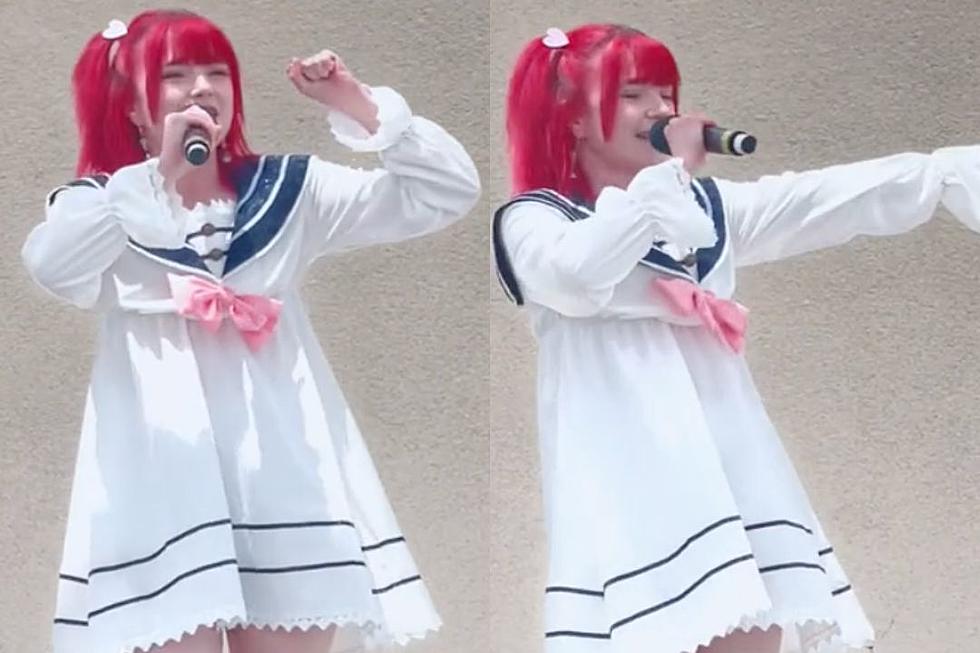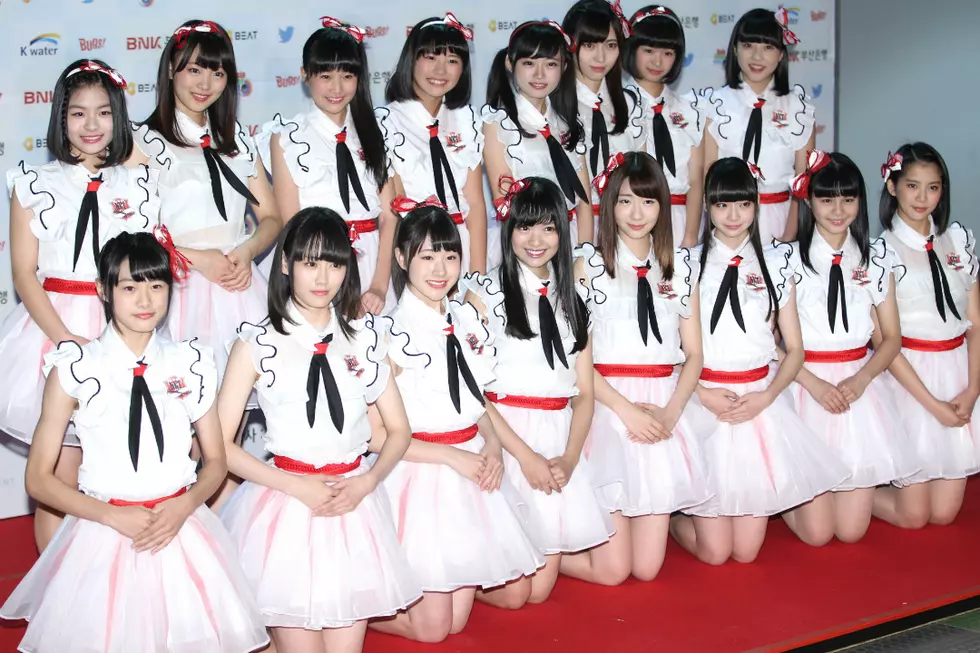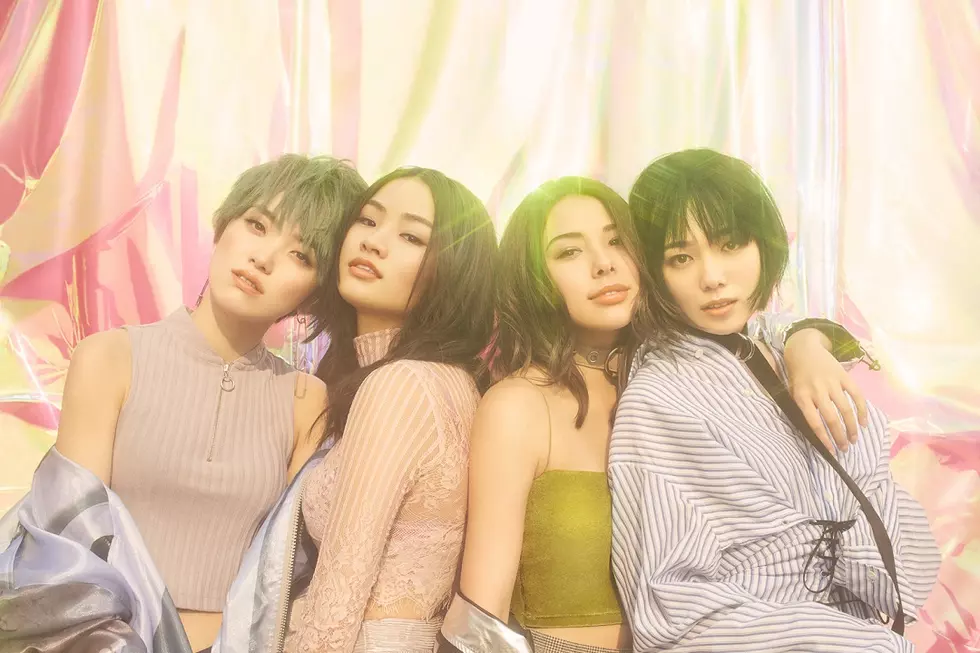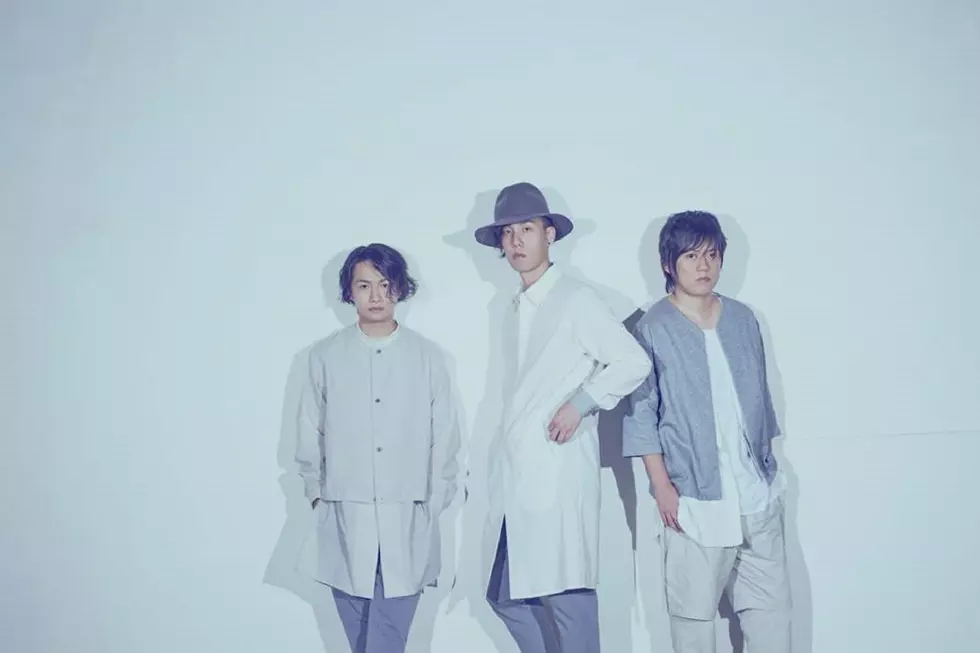
Japan and the Holograms: Hatsune Miku Is the Pop Star of the Future
On Saturday May 28, Japanese pop star Hatsune Miku will perform at Hammerstein Ballroom in New York City, but fans wont be able to take a selfie or Snapchat with her after the show.
They can't ask for her autograph, or seek out a coveted reply from their fave on Twitter. They can't follow her every move and Starbucks run on Instagram, and poring over each and every one of her quirks in an interview is no option, either. They can buy her merch, download her songs, and see her perform live across the globe — even, sometimes, on late-night TV. But a Miku fan will never have the opportunity to truly meet their idol, because she doesn't exist... at least not in the flesh.
That's because Hatsune Miku is a hologram —she's a Princess-Leia-pleading-with-Obi-Wan projection; a real-life Jem and the Holograms Synergy figure with long, turquoise Sailor Moon pigtails and big, bright eyes that glow like sapphires. Her signature costume looks like something a futuristic anime princess in a video game would wear, and that's because she very much is one. Eternally young and perky at 16 years old, Miku is an actualized vision of the idealized J-pop star, with one special twist: Her fans create her music.
Developed by Japanese company Crypton Future Media, the kawaii virtual phenom is actually the humanoid persona of a vocal synthesizer application. Her image, while synonymous with her own brand and, arguably, her very "being," is technically the mascot for a computer software program that allows users to create original music utilizing Vocaloid technology. To put it simply: You input music and lyrics, and she sings it for you.
Unlike other fictional music acts, the character was designed with no backstory, allowing users to project their own fantasies, ideas and personalities into the narrative. Thus, Miku is by very definition the premiere crowd-sourced pop star, and an opportunity for the public to not only consume the music media they love, but to create it as well. There's no limitations as to who can collaborate with the Japanese singing sensation, with professional artists, DJs and hobbyist musicians alike all taking turns: Hatsune Miku is her fans, and her fans are Hatsune Miku.
In concert, she performs as a 3-D CG animated projection, singing and dancing as fans thrust neon-hued glowsticks in the air by the thousands—the 2016 version of waving a Zippo lighter back and forth in solidarity. She is backed by a live, human band, though her music, by nature, is overwhelmingly electronic, a hybrid between Aqua, Kyary Pamyu Pamyu and basically every techno-pop track featured on Dance Dance Revolution. Like some real-life pop stars, Miku lip-syncs onstage. That's okay—in this case, we forgive her.
Throughout 2016, the hologram's been traversing North America on her Hatsune Miku Expo Tour. Spanning ten cities across the Western continent, the very existence of the tour here in the United States speaks volumes to the power of what she represents — the future! — and a global embracement of the marriage between technology, art and pop culture. From Tokyo to New York City, Hatsune Miku is the adorably disembodied embodiment of cultural diffusion.
She'll hit Manhattan this Saturday (May 28), along with her tour-mates and opening act, Brooklyn-based bitpop band Anamanaguchi. The group's provided live instrumentation for the past two months, and the collaboration's a perfect fit. Inspired heavily by anime, video games and all things digital, the electro-pop outfit creates music that sounds like what might result from shoving a Zedd album into a Sega Dreamcast.
The band also collaborated with her on a track, "Miku," released on May 26. Unlike the majority of her fan-generated singles, "Miku" is in English, ushering in the virtual diva's potential U.S. crossover. Though the tune is a joyful, club-ready bop, the song's lyrics are more meta than you might expect from a computer program singing saccharine dance-pop: "Miku, Miku, you can call me Miku / Blue hair, blue tie hiding in your Wi-Fi / Open secrets, anyone can find me / Hear your music running through my mind..."
Like other pop stars, Miku — who has toured with Lady Gaga — is also a prime candidate for branding and marketing collaborations. With endorsement deals with Google, Louis Vuitton (which previously featured a Final Fantasy character in an ad campaign), and Coca-Cola, she can become an avatar for brands, not just her fans. Her progressive appeal is similarly mesmerizing to the fashion industry, where designers clamor to dress the hottest pop stars in their clothing. After all, Miku's blossoming into an exciting global music icon, and she can quite literally be dressed (or rather, designed) in any outfit imaginable. So why wouldn't Riccardo Tisci dress her in couture for her Vogue story?
Sure, the whole thing may seem a little gimmicky... or even concerning, in some cases. In a world increasingly synthetic and devoid of humanity, do we really need a soulless, virtual pop star? What are the implications here for the future of flesh-and-blood artists pursuing music careers? And if Miku's content is primarily crowd-sourced, who should benefit from her profits?
For now it seems that these are questions better left to be pondered another time, as the joys and opportunities she brings currently outweigh the unknown variables at large. When you're swaying in a sea of people, lost in the glow of thousands of light-sticks and caught up in the pure, euphoric audio-visual bliss that is your favorite computer-generated pop star, what's there to worry about?
In Japanese, Hatsune Miku's name can be broken down into two kanji characters and a word in katakana: 初 hatsu (初), meaning first; ne (音) meaning sound; and miku (ミク) meaning future. Thus, her name literally translates to "the first sound from the future..." Yeah, that sounds about right.
Anamanaguchi and Hatsune Miku perform at Hammerstein Ballroom on Saturday, May 28, at 1:30 p.m., with a second show at 8 p.m.
More From PopCrush









